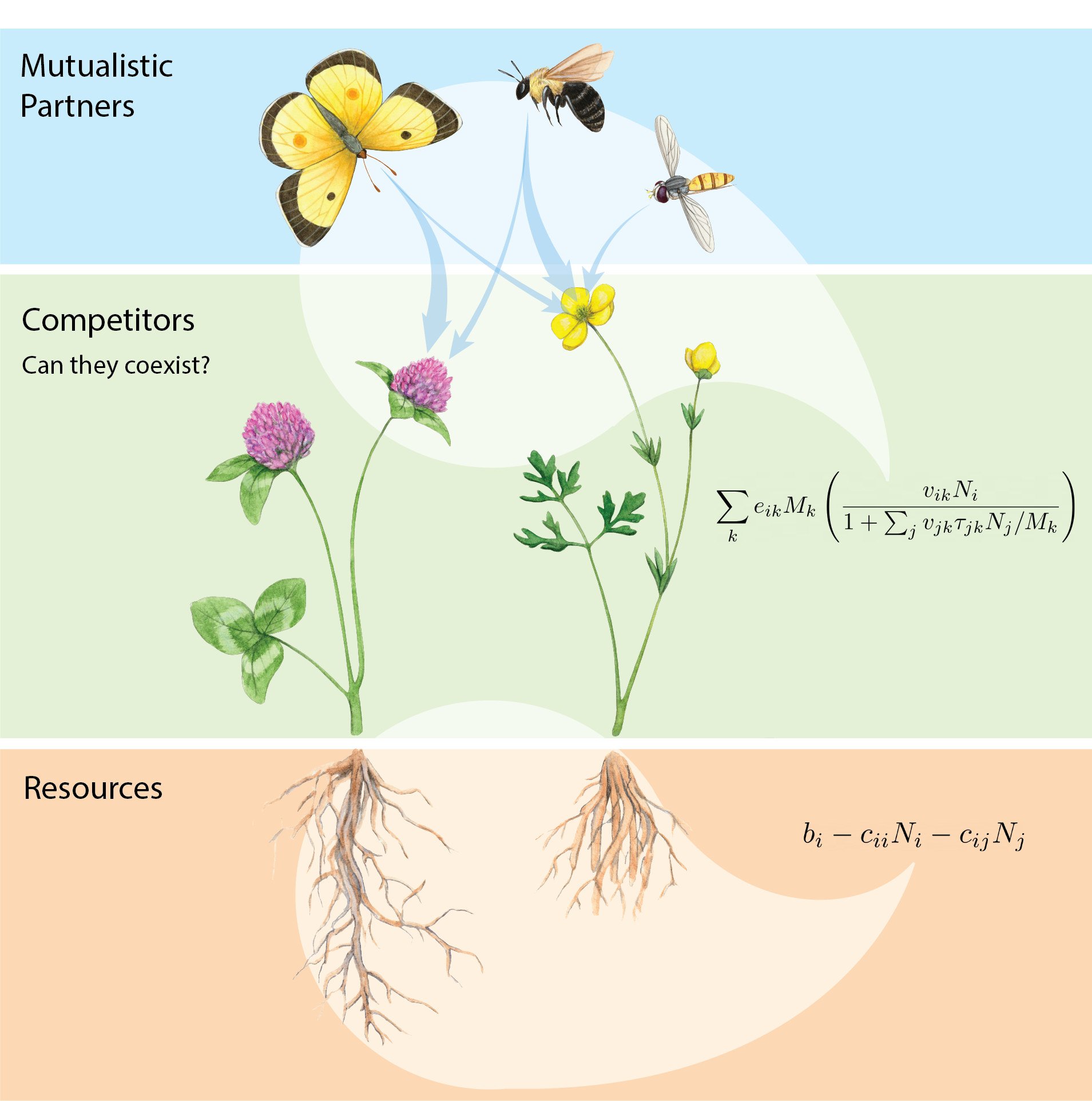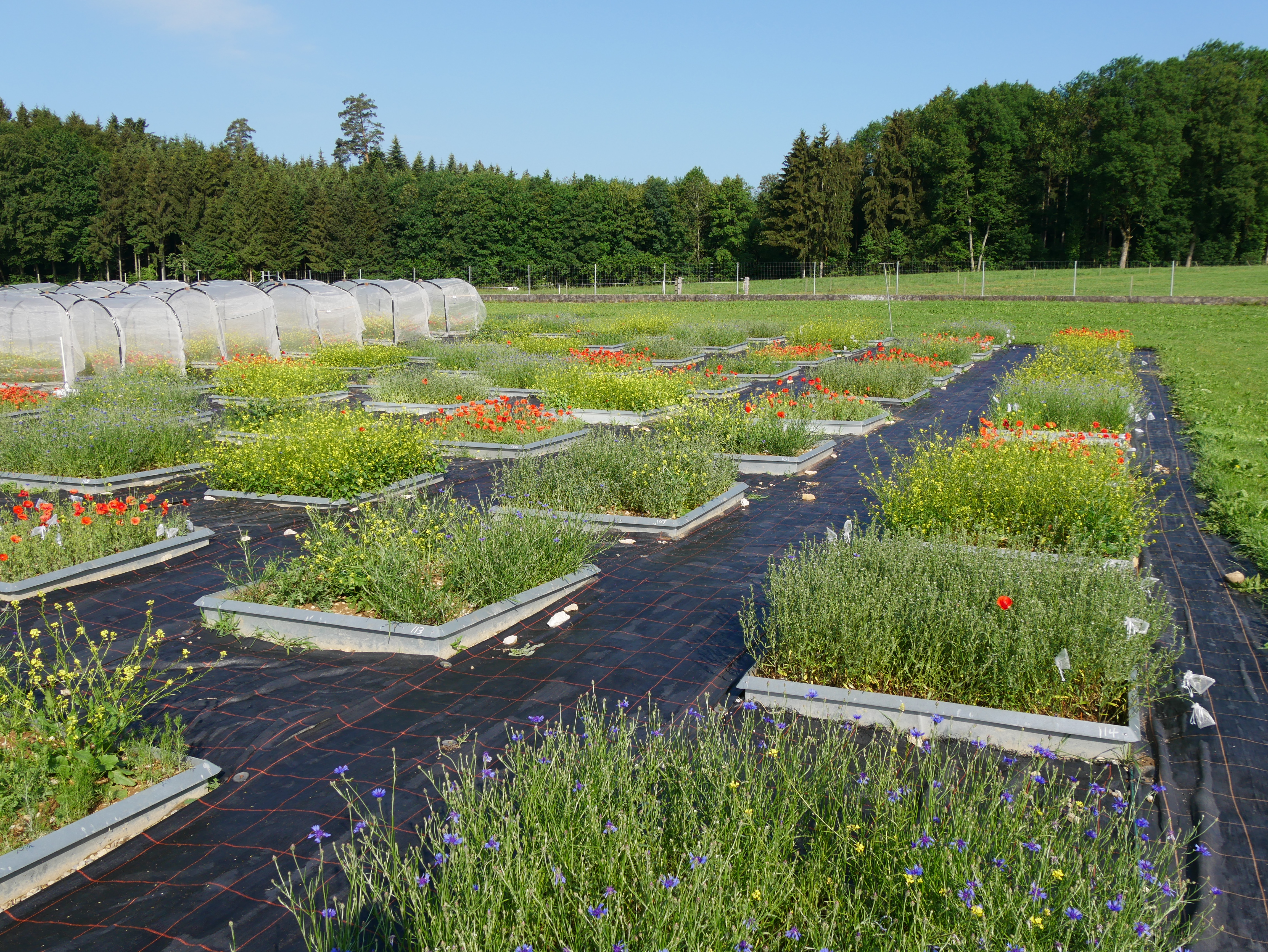Plant-pollinator interactions in a changing world
Ecological theory predicts that novel species interactions can strongly impact community dynamics under climate change. My colleagues at the ETH Zürich and I experimentally simulated climate change impacts on an alpine plant community, which rewired plant-pollinator interactions and often favored novel plant competitors (Richman et al. 2020, Global Change Biology), suggesting that competition for pollinators may be an unexpected impact of climate change on plant communities.
How does competition for pollinators affect plant coexistence? Some of my theory shows that the Competitive Exclusion Principle also applies to mutualism: just as species cannot coexist on the same limiting resources, plants cannot coexist when most strongly limited by the same pollinators (Johnson & Bronstein 2019, Ecology). Other theory provides a framework (figure) for studying how mutualism and competition jointly affect coexistence (Johnson 2021, Ecology). I show that failing to account for mutualisms can lead to erroneous conclusions about coexistence.

With Jonathan Levine (ETH Zürich/Princeton), I tested my theory by conducting a large field experiment, finding that competition for pollinators destabilized plant coexistence (Johnson et al. 2022, Nature). These effects should grow stronger if pollinator decline intensifies pollen limitation, so I experimentally simulated pollinator decline, which reduced plant fitness and reshuffled plant competition, suggesting that pollinator decline could reduce plant diversity by driving competitive exclusion.
Given that plants and pollinators are shifting both their ranges and phenologies (biological timing) in response to climate change, I am interested in how spatial and temporal variability influences plant-pollinator coexistence and coevolution. I have derived eco-evolutionary theory reconciling how mutualisms can evolve (Johnson et al. 2021, Nature Communications) and I am currently exploring how plant-pollinator communities respond to climate change and pollinator decline.
